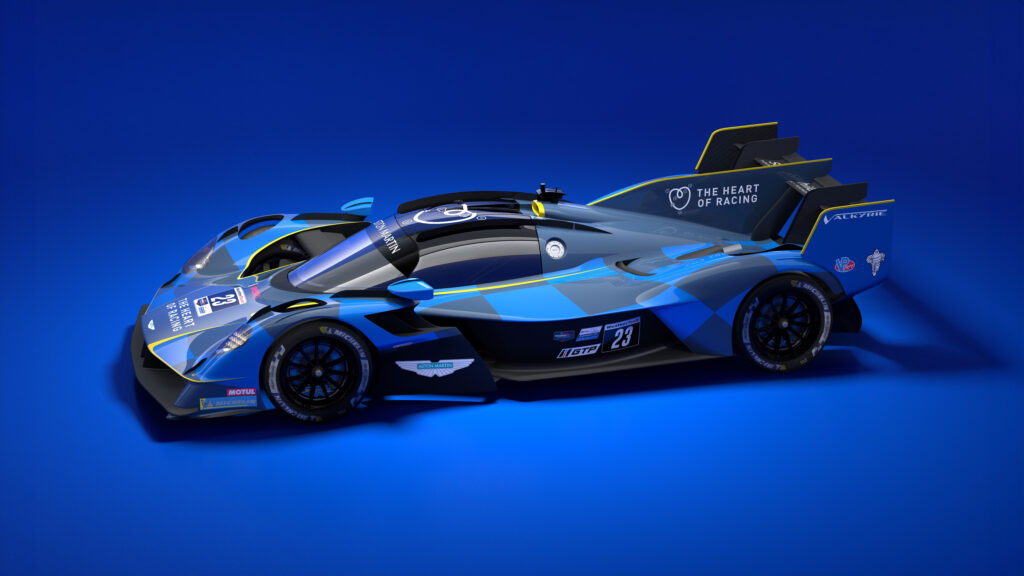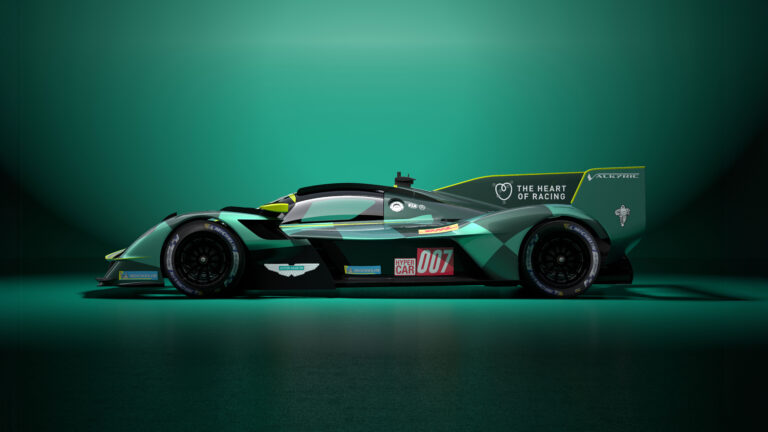Aston Martin’s Valkyrie LMH has finally been thrust into the public gaze, five years after the project was initially mooted. It is fair to say that the car is the closest yet to embodying the spirit of the Le Mans Hypercar rules as originally envisaged: a road-based hypercar taken racing. Aston will be the only outfit running in Hypercar with a car able to directly trace its lineage to a homologated road version.
Developed by Aston Martin Performance Technologies, THOR (The Heart of Racing) and Multimatic, the Valkyrie has taken the basics of the road car and adapted them to the LMH rule set.
For example, the 6.5-liter, Cosworth-developed NA V12 has been detuned to hit the rules’ mandated power output of 580kW, down from the c. 750kW that the roadcar version produces. The Valkyrie will also be the only LMH to run as a non-hybrid when it hits the track in Qatar at the end of February, despite the road car featuring a hybrid powertrain.
Speaking to PMW, Aston Martin’s Adam Carter, head of endurance motorsport, explained that the choice to rely solely on ICE power was dictated by the regulations and the nature and weight of the production powertrain.
“Hybrid systems come with a significant mass consequence, so to take a car that’s also carrying a V12, which comes with a mass trade as well, when you do the summation of everything it becomes, let’s say, a different challenge.”
Carter also noted that on the Valkyrie road car, the hybrid is on the rear axle, while on the race car it would have been ideally placed on the front axle. Such a change would have entailed revision to the monocoque and other elements of the chassis, leading to further weight penalties. Retaining the styling cues of the Valkryie was another important consideration for the brand, and implementing a hybrid would have brought with it different cooling demands. Packaging the additional heat exchangers and their associated inlets would have made this goal more challenging.
Active aero out
Regulations dictated considerable changes to the suspension and bodywork compared with the production car, which features both active chassis control and aerodynamics. According to Carter, extensive changes were made to the underfloor to bring the aerodynamic performance in line with the regulation performance window.
“We’ve had to redefine the aerodynamics of the car,” he explained. “We went out with great intention of leaving as much of the outward-facing surfaces as per the Valkyrie surfaces. It’s very important that it’s the full representation of the Valkyrie where possible. So in terms of the repositioning in the performance window, a lot of that is on the under floor and front wing area, and per the other LMH and LMDH cars, there’s an amount of work put in place around the aerodynamic stability criteria – apertures in fenders and rearing end plates.”
As to where the aerodynamic performance of the race car versus the phenomenally potent road car falls, Carter was diplomatic. “It’s not a straightforward answer, because of the way the production car operates with the active aerodynamics. Obviously the LMH car is a passive vehicle, whereas the road car is a fully active platform car. So it would be unfair to do a comparison, because in different conditions, the active car has given itself different performance.”
Aston Martin has been conducting a testing program in the US and has completed over 15,000km of running so far, with further endurance tests planned once the car is homologated and makes its WEC debut in Qatar.
Find more Aston Martin news here



